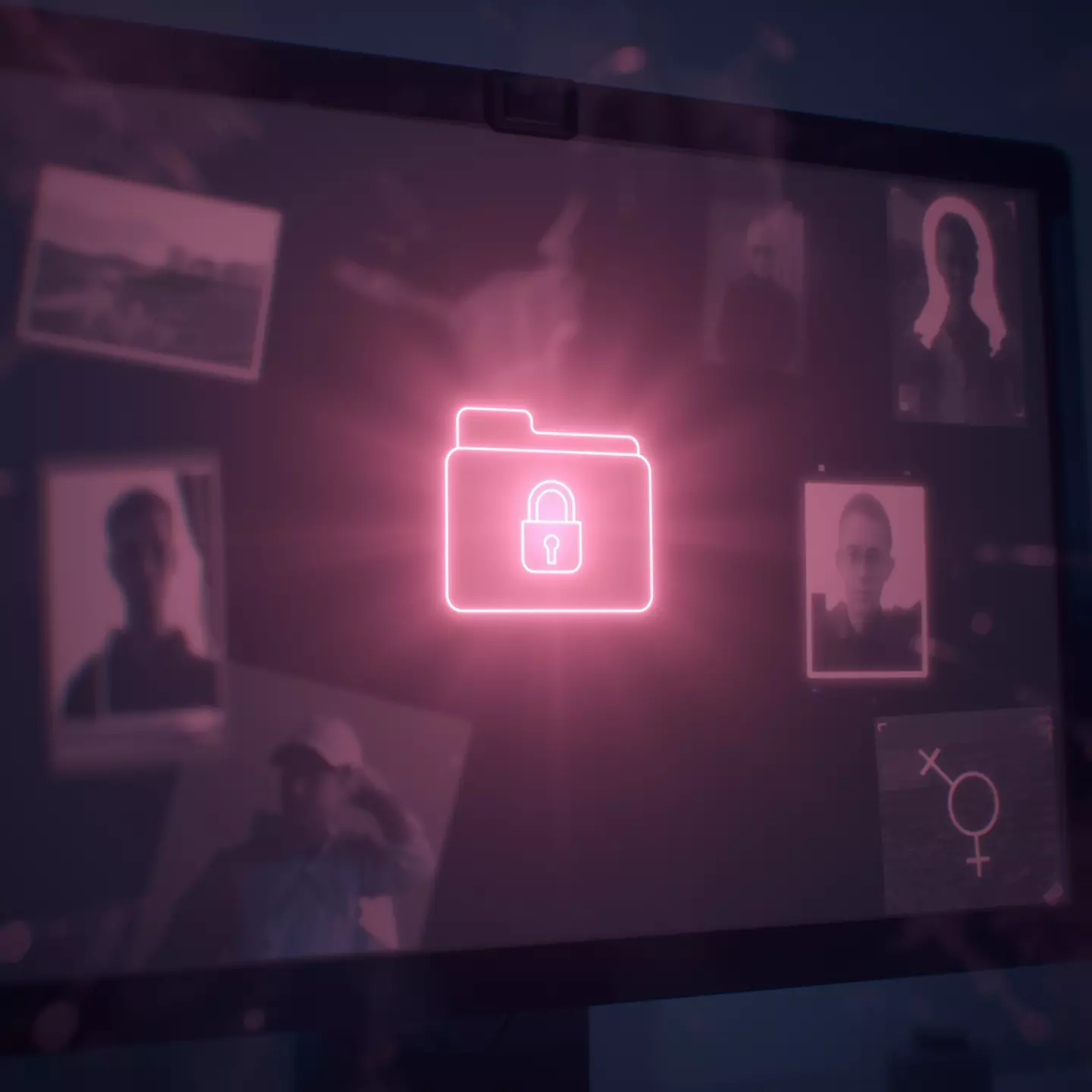Table of Contents
Sometimes the hardest part of healing isn’t what’s happening now—it’s the way the past lingers in unexpected places. You’re scrolling through your phone or opening an old cloud album, and suddenly you’re staring at a version of yourself you’ve worked so hard to grow beyond. The name you no longer claim. The face that feels like a stranger.
For many, transgender digital hygiene becomes an essential act of care—helping transform those ambushes into moments of safety and choice.
The Hurt of Old Archives
Photos and names carry weight. For some, they hold joy. For others, they hold pain. And for many trans people, they hold both.
When old albums are littered with deadnames or pre-transition images, they don’t just sit quietly. They intrude. They remind. They reopen.
That’s why so many turn to digital hygiene practices that affirm their present identity:
- Renaming files and folders to reflect a chosen name
- Using tagging systems to separate “then” and “now”
- Creating private, encrypted storage for sensitive photos
Even these small acts matter. Research shows that affirmation in just one more space of life decreases depression and self-harm risk dramatically.

The Risks of Leaving Things Untouched
When old names linger in digital systems, the harm isn’t only internal—it becomes external too.
Healthcare records, school archives, family-shared albums—when they default to an old name, they send the message that identity is negotiable. That who you are now is optional.
This has consequences:
- Loss of trust in institutions
- Barriers to care and access
- Risk of unintentional outing or harm
Deadnaming in official or shared spaces isn’t a slip—it’s a reminder of systemic neglect. Protecting yourself digitally is also protecting yourself from the casual cruelties of a world still catching up.

No Contact Isn’t a Game – It’s a Healing Strategy
Let’s examine the No Contact strategy in: Science & Psychology, Planning it, Digital Hygiene, Relapses-Cravings & Crashes, Special Cases & Exceptions… and Signs that it’s working +What comes next.
Tap here to read more →
Preserving Without Surrendering
But what if erasure feels wrong? What if you want to honor where you’ve been, even if it hurts?
That’s where curated control comes in. You don’t have to choose between deletion and constant exposure. There’s a middle ground:
- Create hidden folders under your chosen name
- Encrypt archives so they exist without surprising you
- Retire certain files altogether—turning the act into a ritual of release
Healing isn’t about erasing the past. It’s about softening its grip.
Closing Reflection
For some, healing means deletion. For others, it means encryption. For most, it’s a constant recalibration: what stays, what hides, what rests.
Your archive is yours. Your name is yours. Your story is yours.
The power is not in pretending the past never happened—it’s in refusing to let it define the present.
FAQ
Q1. What does “transgender digital hygiene” mean?
It refers to managing digital files, archives, and online spaces in ways that respect a trans person’s chosen name and identity.
Q2. How can I safely store old photos that use my deadname?
Place them in encrypted or password-protected folders, or move them to offline storage like an external hard drive.
Q3. Is it better to delete or hide pre-transition photos?
It depends on your comfort. Some prefer deletion, others encrypt or hide them for later reflection. The key is curated control.
Q4. Why is managing digital archives important for transgender people?
Because unmanaged archives can cause emotional harm and risk unwanted outing. Digital hygiene helps protect dignity and safety.
Scientific Sources
-
Stephen T. Russell, Amanda M. Pollitt, Gu Li, Arnold H. Grossman (2018): Chosen Name Use Is Linked to Reduced Depressive Symptoms, Suicidal Ideation, and Suicidal Behavior Among Transgender Youth
Key Finding: Using a chosen name across different life contexts reduces depression, suicidal ideation, and suicidal behavior significantly.
Why Relevant: Affirming identity digitally (renaming, archiving respectfully) has measurable mental health benefits.
https://www.ncbi.nlm.nih.gov/pmc/articles/PMC6165713/ -
Johns Hopkins Bloomberg School of Public Health (2024): Study Reveals Significant Barriers for TGNC Adults Accessing Healthcare in the US
Key Finding: 25% of TGNC individuals reported being deadnamed or misgendered by medical providers even after corrections.
Why Relevant: Demonstrates how systemic deadnaming undermines trust and emphasizes the importance of respectful digital identity management.
https://publichealth.jhu.edu/2024/study-reveals-significant-barriers-for-tgnc-adults-accessing-healthcare-in-the-us -
D. Hofman (2023): Queer Privacy Protection: Challenges and the Fight within U.S. Libraries
Key Finding: Archival systems often fail queer privacy needs, risking exposure and outing through metadata and rigid identity structures.
Why Relevant: Directly connects to storing, hiding, or retiring archives for transgender people to prevent harm.
https://link.springer.com/article/10.1007/s11196-023-09994-x
- Work-Related Contact After Breakup: Neutral Templates for Stress-Free Replies

- Email and Calendar Filters for Breakups: Smart Digital Hygiene That Protects Your Healing

- Digital Hygiene After Breakup: Block, Mute, Restrict — A Healing Decision Tree That Works

- Queer Digital Hygiene: Rebuild Your Feed From Triggers to Affirming Content in 7 Days

- Transgender Digital Hygiene: Protecting Identity, Deadnaming, and Healing Through Archives

- Lesbian Women & Digital Hygiene: How to Avoid Echo Chambers on Instagram & TikTok

- Gay Men & No Contact: The Best Dating App Strategy to Heal Fast

- Women & Digital Hygiene After a Breakup: Powerful Week One Algorithm Rewiring

- Phone Detox for Men: Powerful Focus Modes & Friction Hacks to Heal Faster


Leave a Reply